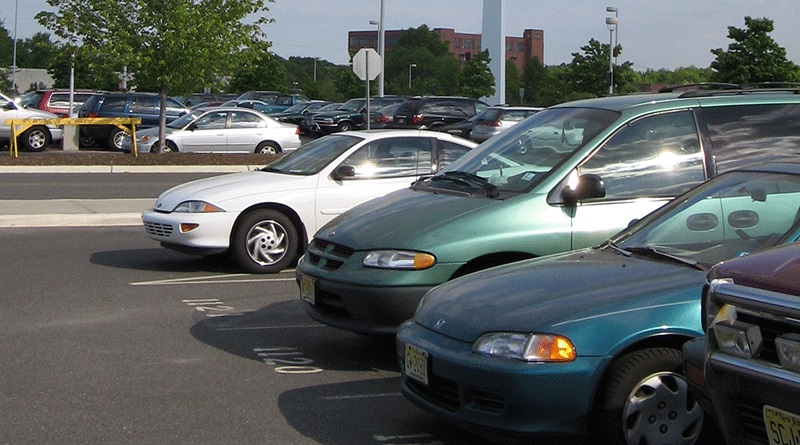Within the last decade, there has been growing interest in reassessing how to deal with parking issues in downtowns. Questions are being raised about how much parking is really needed, what form this parking should take, and who should pay to use it. Large surface parking lots with unused capacity dot the downtown areas consuming valuable land that could be put to greater economic use, particularly as sites for mixed-use development. Congestion and driver frustration would be greatly reduced with better knowledge of where parking is available. Granted, in TODs, parking demand issues are compounded by commuters seeking spaces. Yet, new ways of thinking about parking supply and demand are yielding workable, cost-effective solutions. Thus the “old parking paradigm” is giving way to the “new parking paradigm.”
OLD & NEW PARKING PARADIGMS COMPARED
| Old Parking Paradigm | New Parking Paradigm |
|---|---|
| More parking is better | “Parking problem” can mean inadequate supply, inefficient management, inadequate information, and other problems associated with parking facilities and activities |
| Parking should generally be provided free. Whenever possible, parking facilities should be funded indirectly, through building rents or taxes | Too much capacity is as harmful as too little |
| Parking should be available on a first-come basis | As much as possible, users should pay directly for parking facilities |
| Parking requirements should be applied consistently, without exception or variation | Parking should be regulated to favor higher priority uses and encourage efficiency |
| Traditional solutions should be favored. New approaches should be discouraged since they are unproven and not widely accepted | Innovations should be encouraged, since even unsuccessful experiments often provide useful information |
| Parking management should only be applied as a last resort, where it would be too costly to increase supply | Parking management programs should be widely applied to prevent parking problems |
| “Transportation” means driving. Dispersion of destinations (urban sprawl) is acceptable or even desirable | Automobile traffic is one part of the transportation system. Dispersed, automobile-dependent land use patterns may be undesirable |
Recent publications by Shoup, Litman, ULI and others (see our TOD Literature page) have raised awareness among professionals, officials and the public that changing parking strategies can help break the cycle of auto-dependency in our communities.
New proposals include:
- Setting maximum instead of minimum parking requirements for new construction
- Accounting for normal not peak demand
- Implementing shared parking arrangements
- Charging fees for parking
- Uncoupling the price of parking from housing
- Building mixed-use garages with better design and location
- Providing more equitable financing of structured facilities
All of these sources call for parking need assessments to be made in light of local conditions, taking into account demographics, land uses, and transit availability. Simply reaching for a number from the Institute of Transportation Engineers manual or using Residential Site Improvement Standards without local analysis is not “smart growth,” nor good TOD policy.

